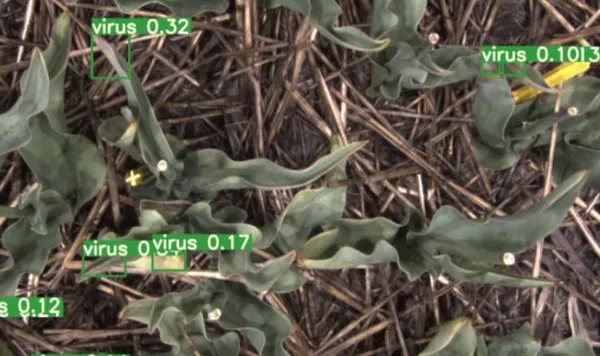The Tulip Breaking Virus (TBV) causes a lot of damage to growers every year. Infected tulips must be quickly detected and then cleared to prevent them from affecting other flowers. Detecting by hand is labor-intensive. That is why the Greenhouse Horticulture and Flower Bulbs Business Unit of Wageningen University & Research teach computers to recognize the virus.
The flower bulb sector wants to increase sustainability and reduce dependence on crop protection agents. The public-private partnership Bollenrevolution 4.0 is working on this through the development of precision farming techniques, vision and sensor techniques in the field and in the barn and during processing, and data management (such as the use of data for operational management). Precision farming includes automatic disease detection. For tulips, this mainly concerns the TBV (Tulip Breaking Virus) and TVX (Tulip virus X). As soon as the tulips form leaves in the field, they are susceptible to these viruses: TBV is being transferred by lice. Infected tulips show spots on both the flower and the leaf. However, those spots are easy to confuse with, for example, frost damage. Moreover, detecting the virus is labor-intensive, while the bulb sector is finding it increasingly difficult to find good employees.

WUR is therefore investigating whether the virus can be properly detected with the help of vision software and deep learning. This is done with the Strong Gold cultivar, the most widely grown tulip in the Netherlands. To this end, the software is fed with detailed photos of infected leaves. As a result, the software learns to recognize suspicious spots better and faster than people can. To teach the computer to detect the virus, a tractor is equipped with a container in which ten cameras with lights are attached. The tractor drives slowly across a tulip field, and the tulips are viewed while driving. At this time, the tractor is only used for research purposes: what the final device will look like and how the tulips can be removed later.
Bulb Revolution 4.0
The research took place in the context of Bulb Revolution 4.0. The implementation of this Public-Private Partnership lies with a consortium of seven partners. These are: KAVB, Anthos, Wageningen University & Research (WUR), Cremer Specialemachines B.V., Machinefabriek Steketee B.V., Agrisim B.V., BKD and TechNature B.V. Economic Board Greenport Duin & Bollenstreek and Rabobank Bollenstreek contribute to the financing from their Innovation Funds.
 For more information:
For more information:
Wageningen University & Research
www.wur.nl
